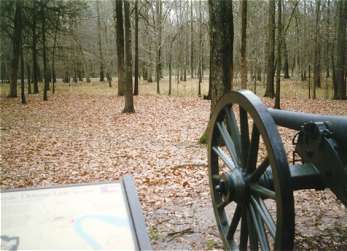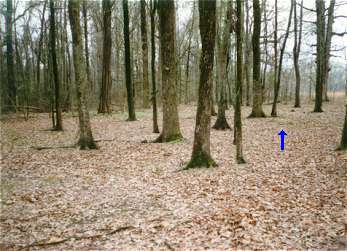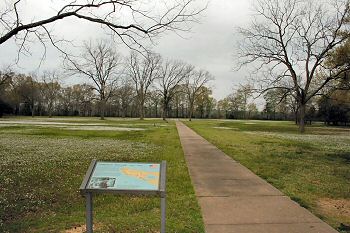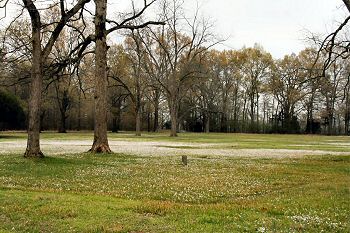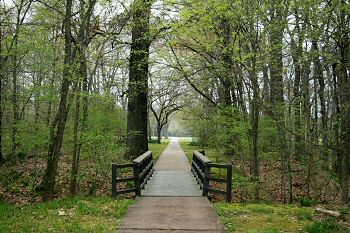|
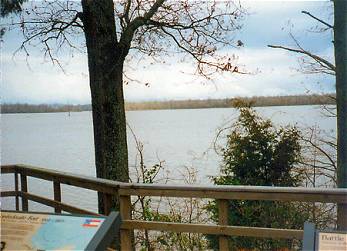 (March
1997) Site of Fort Hindman.
Site
Marker: Battle of
Arkansas Post January 1863 Sideshow to the Union Capture of Vicksburg.
While assembling for the descent on Vicksburg during the winter of
1862-63, General John A. McClernand diverted the portion of the Union army
under his command to attack Arkansas Post. On Friday evening, January 9,
sixty steamers unloaded 32,000 Union soldiers to besiege the fort from the
north (your left). On Saturday Union soldiers drove the Confederates back
to their last line of defense adjacent to the fort. Union gunboats steamed
upriver (toward you) and began pounding the fort. On Sunday, small-arms
and cannon fire crackled and boomed up and down the weakening Confederate
defense line (behind you), while the gunboats knocked out the fort's heavy
artillery. Outnumbered and outgunned, the defenders raised white flags
over their works after a 30-hour engagement. Site
Marker: Confederate Fort 1862 - 1863 It fell to the
Gunboats - And the Arkansas River. To protect Little Rock and
southeastern Arkansas from a river attack, Confederate engineers
built an earthen fort at Arkansas Post in 1862. Known later as "Fort
Hindman," it measured 100 yards from point to point and was armed with
three heavy guns and several smaller cannon. From a high bluff here on the
river bend, the fort's guns could zero in on boats upriver (to your right)
or downriver (straight ahead). Yet they were no match for the fleet of
Union gunboats which compelled the garrison to surrender in January 1863.
Today the river follows a new course, but before it abandoned the old
channel in front of you, it ate away the bluff "Fort Hindman" stood on (March
1997) Site of Fort Hindman.
Site
Marker: Battle of
Arkansas Post January 1863 Sideshow to the Union Capture of Vicksburg.
While assembling for the descent on Vicksburg during the winter of
1862-63, General John A. McClernand diverted the portion of the Union army
under his command to attack Arkansas Post. On Friday evening, January 9,
sixty steamers unloaded 32,000 Union soldiers to besiege the fort from the
north (your left). On Saturday Union soldiers drove the Confederates back
to their last line of defense adjacent to the fort. Union gunboats steamed
upriver (toward you) and began pounding the fort. On Sunday, small-arms
and cannon fire crackled and boomed up and down the weakening Confederate
defense line (behind you), while the gunboats knocked out the fort's heavy
artillery. Outnumbered and outgunned, the defenders raised white flags
over their works after a 30-hour engagement. Site
Marker: Confederate Fort 1862 - 1863 It fell to the
Gunboats - And the Arkansas River. To protect Little Rock and
southeastern Arkansas from a river attack, Confederate engineers
built an earthen fort at Arkansas Post in 1862. Known later as "Fort
Hindman," it measured 100 yards from point to point and was armed with
three heavy guns and several smaller cannon. From a high bluff here on the
river bend, the fort's guns could zero in on boats upriver (to your right)
or downriver (straight ahead). Yet they were no match for the fleet of
Union gunboats which compelled the garrison to surrender in January 1863.
Today the river follows a new course, but before it abandoned the old
channel in front of you, it ate away the bluff "Fort Hindman" stood on |
 (
(